On Friday, October 30, 2015, I did a live concert for somewhere between 24,000-30,000 elementary school students.
Audience members hailed from all 50 United States, 8 Canadian provinces and territories, and several other countries.
I was in my basement.
 The event was called “The Largest Online Gathering of K-5 Classrooms (ever!),” and I dreamed it up myself.
The event was called “The Largest Online Gathering of K-5 Classrooms (ever!),” and I dreamed it up myself.
I thought it would be really fun to see how many schools I could bring together online, in real time, for a shared musical experience.
It would also be great promotion for my arts-in-education work, I figured.
In today’s Educate and Entertain post, we’re going to “pull back the covers” a bit on this event, looking at things like:
- how and why anyone would do such a thing
- how it went
- most importantly, how all of us as performing artists can be reaching new audiences via live streaming technology
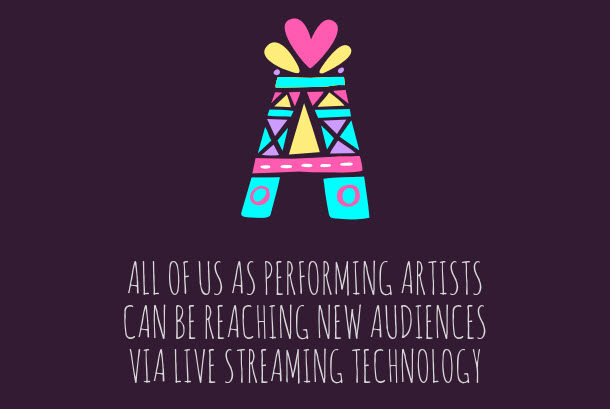 Broadcasting your own performances to remote locations isn’t as complicated as you might think, and the results can be pretty powerful.
Broadcasting your own performances to remote locations isn’t as complicated as you might think, and the results can be pretty powerful.
How? Why? Wait. What?
So, the backstory is that I’d been experimenting with a few “laptop concerts” for adult audiences via the Concert Window platform.
Turn on the computer, test your webcam and microphone, and hit the “Broadcast” button – – live from your bedroom.
Those were fun to do, and got me thinking about broadcasting some of my educational concerts for kids directly into school classrooms.
Could it be done?
What would it be like?
How would students and teachers respond to this format?
While I’ve been visiting schools in person for the last twenty years, it hadn’t dawned on me until then that perhaps I could use the “distance learning” format to reach far-flung locations and connect with students across the country, and beyond.
 So, I bit the bullet.
So, I bit the bullet.
In 2014, I launched a series of virtual school presentations for K-12 students which continues to this day.
Schools pay a fee to participate in live online events with a limited number of other schools.
The Great Part
Because the majority of classrooms in the United States and Canada are now equipped with internet-connected “Smart boards,” and the rest generally have projectors or computer labs, the opportunities felt (and still feel) pretty limitless.

That’s me on each screen, playing guitar and singing for students in Staten Island NY. Check out the kid on the right (in green) waving to me!
It still blows my mind to think that, pretty much overnight, my marketplace expanded from places I can drive to (and back from) in a single day to any location with an internet connection, anywhere in the world.
The Hard Part
While the response to these programs has been really wonderful, there remains a big hurdle: getting the word out to educators in states and countries where I’ve never worked.
How do you do that?
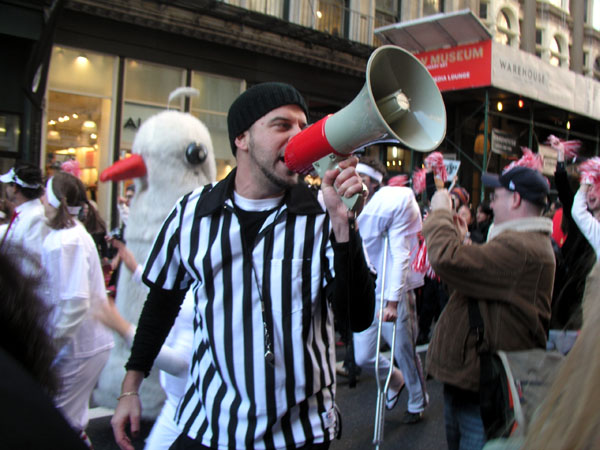
That’s where the free event comes in.
I decided to show teachers how easy, fun, and impactful a live streamed performance can be by offering a quick little Friday afternoon event, with a fun hook, at absolutely no cost to them.
The Largest Online Gathering of K-5 Classrooms (ever!)
I’d never “produced” an event on this scale before, but why not? I’m a pretty DIY guy, and I already had the technology in place to make this happen. (More on that part in a minute.)
First problem: What to call it?
I’m glad to say that I spent longer than my usual 5 minutes thinking about a name for this event.
I knew it would be critical. With an advertising budget of near zero, I needed an intriguing title to increase my chances of getting media coverage.
Take a look at the following three options:
 Each one is an accurate description of what would happen, but which sounds the most fun, exciting, or newsworthy to you?
Each one is an accurate description of what would happen, but which sounds the most fun, exciting, or newsworthy to you?
I went with choice #3.
As it turned out, I still got ignored by 95% of the media outlets I contacted, but the 5% that did cover it made all the difference in the success of the event.
(You can still see the stories from eSchool News, Education World, and Kids Discover.)
When to do it?
I lucked out there. It was mid-summer when I started thinking about the event, and I discovered that October is “Connected Educator Month.”
It was a no brainer.
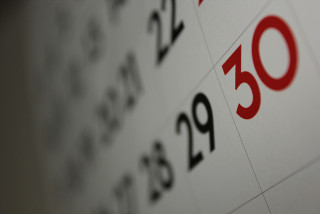 After looking at the calendar for good dates, I saw that the last school day of the month fell on a Friday, so I scheduled the event for that date and billed it as a free gathering “to celebrate the end of Connected Educator Month.”
After looking at the calendar for good dates, I saw that the last school day of the month fell on a Friday, so I scheduled the event for that date and billed it as a free gathering “to celebrate the end of Connected Educator Month.”
Registrations Piled In!
I started to promote a good two months ahead of time, using my own email database of school contacts along with various social media channels and lots of outreach to the press.
I created a hashtag for the event (#K5gathering), a logo, and a webpage.
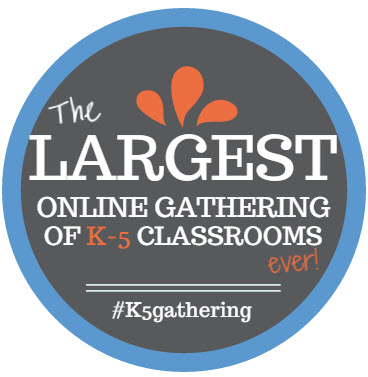 I made custom videos for education reporters at NPR, Washington Post, and the New York Times.
I made custom videos for education reporters at NPR, Washington Post, and the New York Times.
I worked with the people at Connected Educator Month to spread the word.
The net result of all of the above was 1,536 registrations, from a total of 19 different countries.
Each registration represented anywhere from 10 students (a small classroom) to 500 or more (an entire school).
They came in from all over the world!
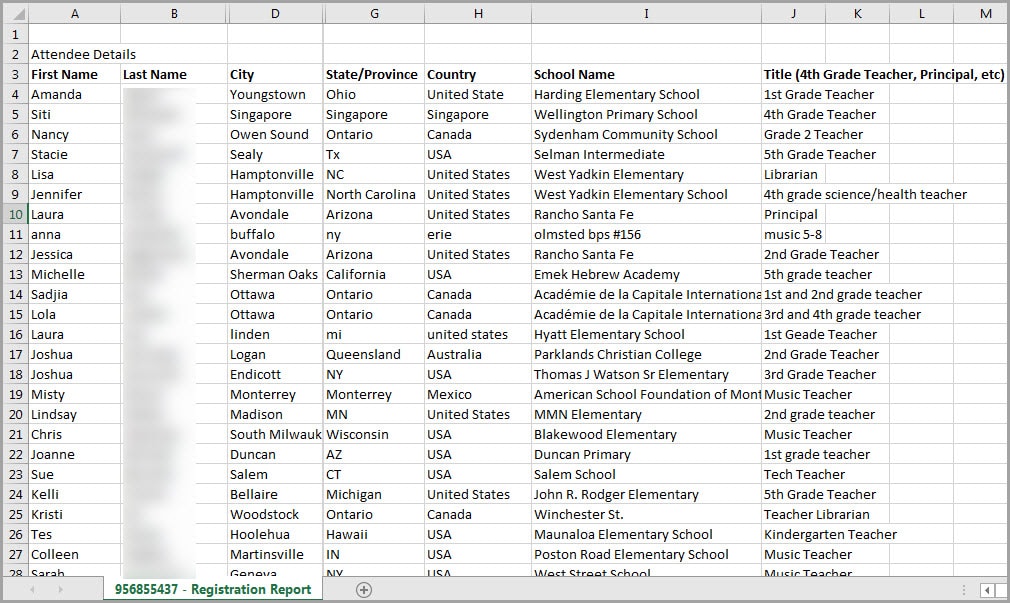 I couldn’t believe I was hearing from places where students wouldn’t even be in school at the time of the event: Australia, Bulgaria, China, India, Italy, Nigeria, Philippines, Saudi Arabia, Singapore, Sweden, Switzerland, United Arab Emirates and more!
I couldn’t believe I was hearing from places where students wouldn’t even be in school at the time of the event: Australia, Bulgaria, China, India, Italy, Nigeria, Philippines, Saudi Arabia, Singapore, Sweden, Switzerland, United Arab Emirates and more!
PR Lessons Learned
I’m happy to say that in the process of promoting this event, I was able to confirm several of the often-sited best practices for generating some press coverage.
They go something like this…
Getting the word out about yourself and your services is much easier when:
- you create an event with some sort of interest or intrigue
- you’re not selling anything, or even better, you’re providing lots of value to a community of people through a gesture of goodwill
- the event ties into something seasonal and/or something currently trending in the news (seasonal = Connected Educator Month, trending = shrinking opportunities for arts experiences in schools)
- you combine forces with an organization or two that shares similar goals and can help get the word out
How To Live Stream an Event: Technology and Logistics
Platform
The platform I’ve been using for the past year or so to broadcast all of my online events is called Zoom, and I use their Webinar feature.
 I can’t say enough good things about Zoom. The interface is easy to use, it’s been bug-free for end users to access my events (important!), and I find it to be very affordable.
I can’t say enough good things about Zoom. The interface is easy to use, it’s been bug-free for end users to access my events (important!), and I find it to be very affordable.
On top of that, they’re just all-around great people to work with.
In fact, Zoom donated the bandwidth for my “Largest Gathering” event, simply because they thought it sounded like a cool idea and they wanted to support a customer.
There are certainly many other choices out there for live streaming your events though. A quick Google search for “How to Live Stream an Event” or “How to Webcast an Event” will turn up lots of options.
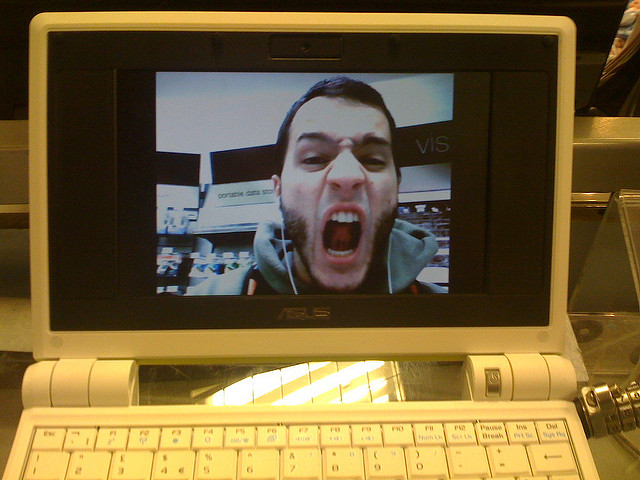 Equipment
Equipment
Assuming you have a computer of some kind, you can get everything else you’ll need for about $200 or so.
(If you don’t have a decent room or setting to film in, you might need another $50 for a dropcloth/backdrop.)
The webcam I’ve been using is a standard Logitech c920. I got it for about $75 at Office Depot.
For a microphone, I bought a Blue Yeti for about the same price ($75) a few years ago.
Simple DIY lighting can be put together with a few clip lights and clothespins, or you can certainly spend more. Just Google “DIY video lighting” for lots of ideas and resources.
Performing For Your Computer
Now, this is the weird part (at least at first).
Imagine singing/dancing/telling stories/doing whatever you do for an audience you can’t see or hear. But they’re there.
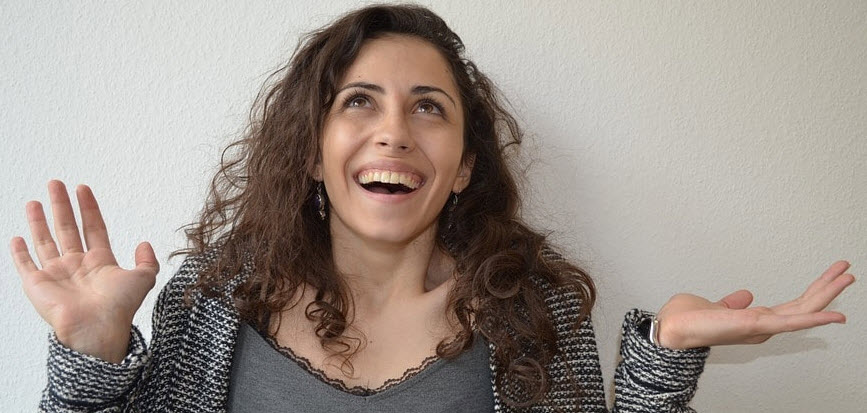 Essentially, you’re performing for your web camera, trusting that the people on the other end are responding the same way your live audiences usually do.
Essentially, you’re performing for your web camera, trusting that the people on the other end are responding the same way your live audiences usually do.
(Yes, there are many ways to do “two-way” events – like a Skype call – where you can see and hear your audience and vice versa, but that severely limits the number of people you can perform for at a given time, so we’re talking about “one-way” or “webcast” events here.)
I’m now entirely comfortable doing hour-long presentations without ANY aural or visual feedback from my audience, but it’s taken a bit of adjusting.
Some Pointers
If I had to distill the lessons I’ve learned so far, here they are:
The show must go on – Just like a live performance (which this is!), don’t even think about stopping if you mess up or if something awkward happens with your equipment.
It CAN be very interactive – So what if you can’t see or hear them? Ask your audience to participate to whatever degree you normally do. You can also use the message board or “chat” functions within your streaming platform to solicit feedback between pieces, ask questions, encourage them to “clap,” etc.
Look directly into the camera – If you’re looking at yourself on the screen, it will appear to your audience as though you’re not focused on them – your gaze will fall somewhere near their navels. Staring into your camera = looking them in the eyes.
Don’t address the fact that you can’t see them – At least for me, I prefer to treat the entire event just as if I’m standing right there in the room with the audience. I assume that they’re doing what I’m asking them to, laughing where my audiences usually laugh, messing up singing lines where live audiences always do, etc. It works out every time. If you can avoid saying things like “Are you doing what I asked you?” and “boy, I wish I could hear you,” the whole thing feels more alive for the participants.
Starting with those suggestions in mind, you should be just fine after getting a few of these under your belt.
How It Went
The free event was an absolute delight.
Of the 1,500 or so teachers/schools that registered, about 1,000 showed up to attend the event, with an average of 27 students participating per registration.
(I only know student numbers through polling participants and extrapolating, so I’m using a range of 24,000-30,000 as a safe estimate of total number of attendees.)
Teachers and students were super excited to participate….

 And the feedback was tremendous….
And the feedback was tremendous….


 They sent me photos and videos afterwards, from all over the place.
They sent me photos and videos afterwards, from all over the place.
Here’s a classroom in Mexico enjoying the show:
https://vimeo.com/144698898
And one in Connecticut:
https://vimeo.com/144167701
While most of the Eastern Hemisphere schools that registered couldn’t actually attend the live event due to time-zone differences, I did hear from a school in Nigeria where they kept students into the evening in order to participate!
And I sent all of the other far-flung schools a replay video to use on their own time.
The Many Benefits
Since October 30, I’ve managed to keep in touch with all 1,500 registrants through the wonders of modern email software.
On top of the tremendous amount of goodwill generated by this event, I now have:
- an international email list of educators who know exactly who I am, what I do, and how their students react to it
- lots of new bookings for my paid programming
- several great new media and industry contacts I can continue to build relationships with
- an event with some “brand awareness” that I can build on, year after year
- lots of quotes from happy teachers (great social proof!)
- lots of photos and videos of kids all over the world interacting with one of my online events
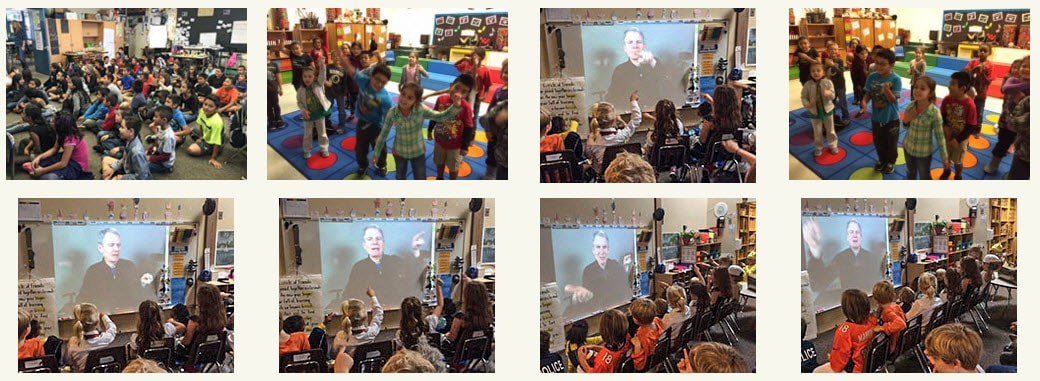 I’d call that a huge win!
I’d call that a huge win!
I’m already planning the “2nd Annual Largest Online Gathering of K-5 Classrooms (ever!)”….
Are You Using Live Streaming?
Thinking About It?
I’d love to hear from you. Just leave me a note in the Comments section below.
(You may also be interested in the article “Performing Online: A New Income Stream“)
[optin-monster-shortcode id=”wxyixuais6os98xz”]
About The Blog
 Since leaving a white-collar marketing job in 1992, Dave Ruch has been educating and entertaining full-time in schools, historical societies and museums, folk music and concert venues, libraries, and online via distance learning programs.
Since leaving a white-collar marketing job in 1992, Dave Ruch has been educating and entertaining full-time in schools, historical societies and museums, folk music and concert venues, libraries, and online via distance learning programs.
Along the way, he’s learned a great deal about supporting a family of four as a musician.
The Educate and Entertain blog provides articles, tips, encouragements, and how-to’s for regional performers (in any region) interested in making a great full-time living in the arts.


This sounds simple enough for an acoustic solo performer. But what about a quartet jazz and blues outfit? I can’t see Zoom working for that. Sound would be horrible. Btw, 30 year marketing strategist for businesses and 40 year touring guitarist.
Zoom can work just fine for a larger group. Just need to configure things so you’re all on screen, or do a multi-camera approach using OBS or other third party platforms. With Zoom’s new music settings, audio has gotten a LOT better there over the last 12 months,
Hey Dave, hope all is well. We created our virtual ToBe Fit show, all prepared to present it to schools using a Zoom link, and now I find out that many schools can’t use Zoom. They want us to do it through Google Meet. Have you found that as well, and do you find it’s just as easy to use either platform?
Yes, this has been my experience as well Barbara, and after using Google Meet just once I felt at home with it.
Dear Dave,
I’m moving all of my shows to video. One of the libraries i work with wanted me to use Google Meet. I had no problem with this Until i found that i couldn’t get sound in my videos. If you’re using Zoom, then you must have sound. has this been a problem for you at all? How can i be sure that I’m getting sound in my videos? I’ve not looked at zoom and Crowdcast which is what library has decided to go with is too expensive for me. I’d appreciate any guidance you can give on this aspect of the presentation. Thank you so much.
Hi Rochelle – yes, all Zoom videos have sound capability. There is a little microphone icon in the bottom corner of the screen – make sure it’s not muted and simply by speaking a few words you’ll see a green meter showing you that audio input is being accepted.
Very cool idea! Great job!
Greetings Dave,
This is exciting and my mind is spinning with several questions related to this page and others.
Here goes:
1: What percentage of an annual income is possible for virtual performances? (Or if it’s easier, what percentage of your income is from virtual events?) From a “library”?
2. About how many videos did you have in your library before you launched it?
3. How do you limit access to five days.
4. How automated is your process?
My focus is Caribbean music but from what I can see, I can learn lots from what you’ve done.
Thx,
JamaicaBob:)
Hi JamaicaBob – I’m glad the article found its way to you, or vice versa. I’ll try to answer your questions in order:
1) The sky is the limit. It depends on how much you want to push this part of what you do. For me, I wouldn’t want it to be the only thing I do, as I really miss the face-to-face interaction of a live performance. This could be a substantial part of your income tho if you wanted it to be.
2) I now have two video libraries! One for classroom teachers and one for music teachers. Each one has 40+ videos in it, but I started with about 10 full-length concert videos on different topics in my first library.
3) For the rentals, limiting access is easy. I post them on my website (which is run on WordPress) with a private password, so only people with the password can access the content. Then, I use a simple free plugin to “expire” the page on whatever date and time I set it for.
4) Process is a mix of automated and not-so-much. I’m always working on that part of it, but it can be a bit labor intensive sometimes the way I do it.
Hope that helps.
Thanks Dave for following up.
1) I too wouldn’t want it to be “all” but knowing there’s significant potential is encouraging.
2) I may be able to start with fewer videos because of the niche but I’ll test to see. What do you mean by “full-length” concert videos? Assembly length (40ish)?
3) I use WordPress as well so that part is helpful. I might try making the virtual events part of a “course” which could be programmed to allow for “x” number of days for completion.
Again, Thanks so much Dave! 🙂
Yes, assembly-length (40-50 minutes)
This is seriously daunting in scope. HOWEVER, you give so many good hints on PR, and generating support for your concert. I am sharing this post with everyone, including my co-conspirator who lives on the other side of the world from me. Thank you for sharing.
My pleasure Karen.
Excellent Post, Dave!
Greetings! Great post. I see you had a teaser to this post on the Bartol Foundation One minute Teaching Artist Tip. Way to go! I am seriously considering doing a live stream to schools and tying it to one of the National Awareness month (Ex. National Black Music Month).
I have been performing and teaching in schools for more than two decades now. How important is it to give the first one away? I see your first online event was free.
Hi TAHIRA – I think that’s entirely up to you. Doing occasional freebies has enabled me to reach lots of educators who otherwise would have been unfamiliar with me or unsure as to how this format would work out for them. Either way, I hope you go forward with the idea!
Dave:
I can’t begin to tell you how impressed I am with your entrepenuership (probably not even a word, but should be.)
Speaking as a former teacher, to keep the attention of that many students at once is the REAL RECORD.
Keep up the great work.
Jack Marek
Jack – Entrepreneurship is absolutely a word (I just looked it up!), and it’s just the way my mind works. I’m lucky that way. If it were hard for me, I probably wouldn’t do it!
But thank you so much for the kind words. I do think that now more than ever, musicians and artists have to think entrepreneurially (that CAN’T be a word) if they want to make a good living at it.
Congratulations on your BIG show, Dave!
Janie Next Door – Jane Christison. : )
Thanks Jane!
Dave..this is awesome….no more flipping the van in windstorms and crashing into deer…when you are ready please invite Mama Earth to be on your show!
Thanks so much for posting how you managed the webcast! I’m a storyteller and have done a few small “Skypetellings” but would love to try this.
Hi Priscilla – my pleasure. Let me know if I can help you with it.
Absolutely brilliant!! This is nothing short of genius!
Genius might be pushing it John, but thanks for the good words!
Thanks for your visionary job! What an inspiring way to reach a lot of kids at the same time. Amazing.
Hi Lauri – thanks so much for your warm words. Have you done any live streaming?
Heya DAve;
A way kool concept. Now…was your concept strictly for performance – how about arts ed? I’d love participate with tidbitsrelating to the untapped field of music psych.
Slainte – RL
Hi RL – what I do via live streaming could be called an “interactive” performance, so I am teaching songs and activities and getting the participants actively involved, but I’m not actually teaching instrumental skills if that’s what you mean.
amazing,impressive,Dave.don’t think my work would be a fit for this type of media,but i never say never(except just then).it’s kind of a webinar motif molded into your own genre.here’s to your continual re-inventing of the music gig!
Richard – it wouldn’t be Monday without hearing from you! Thanks for being my most reliable reader. For you, why not live stream a performance of Great American Songbook music for libraries, senior care facilities, etc?
Excellent, thanks Dave – I’ve been wanting to hear more about this since you told me about it at NERFA. A brilliant plan, with great follow through. You’re the man!
Thanks Jay!